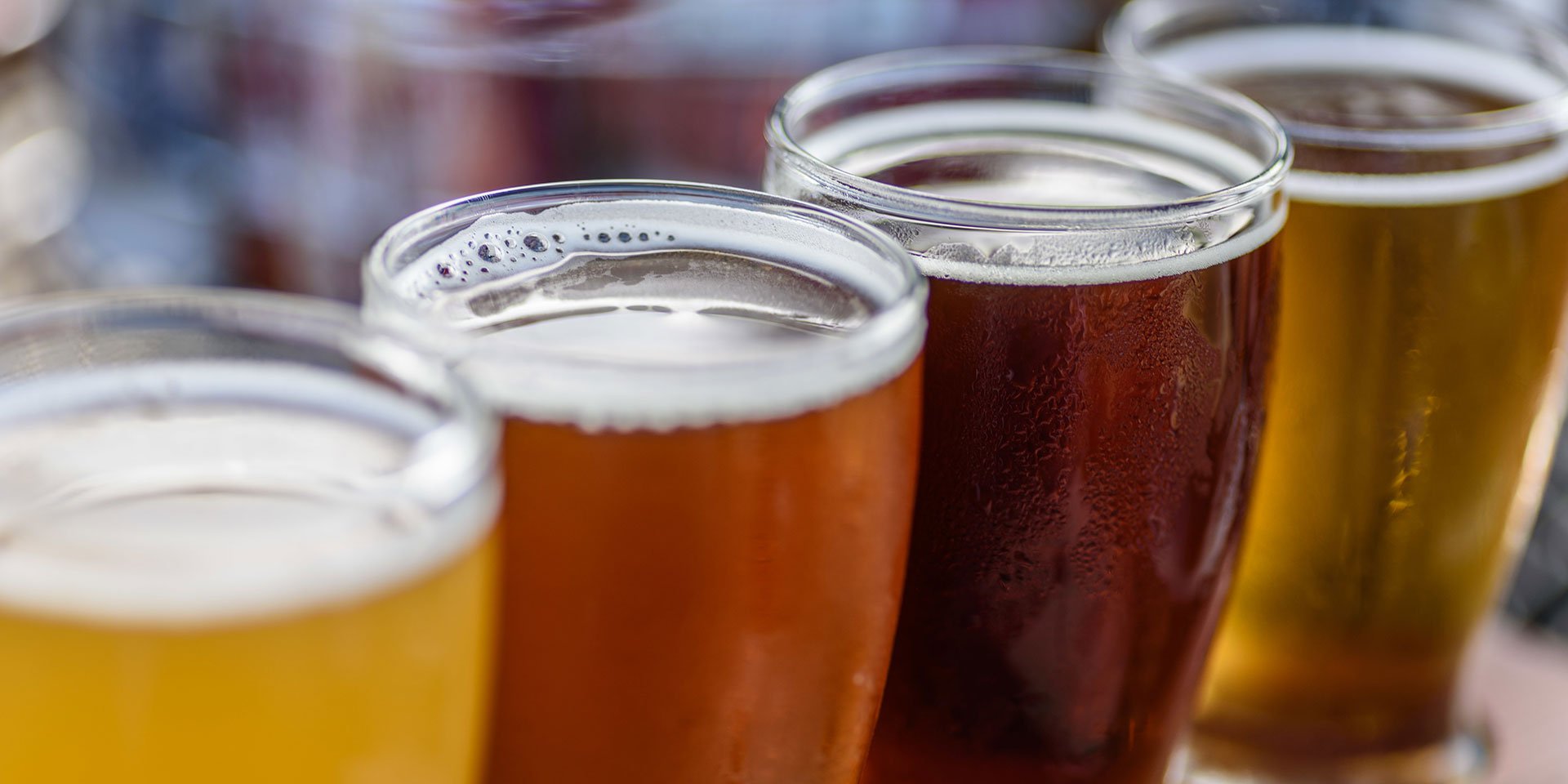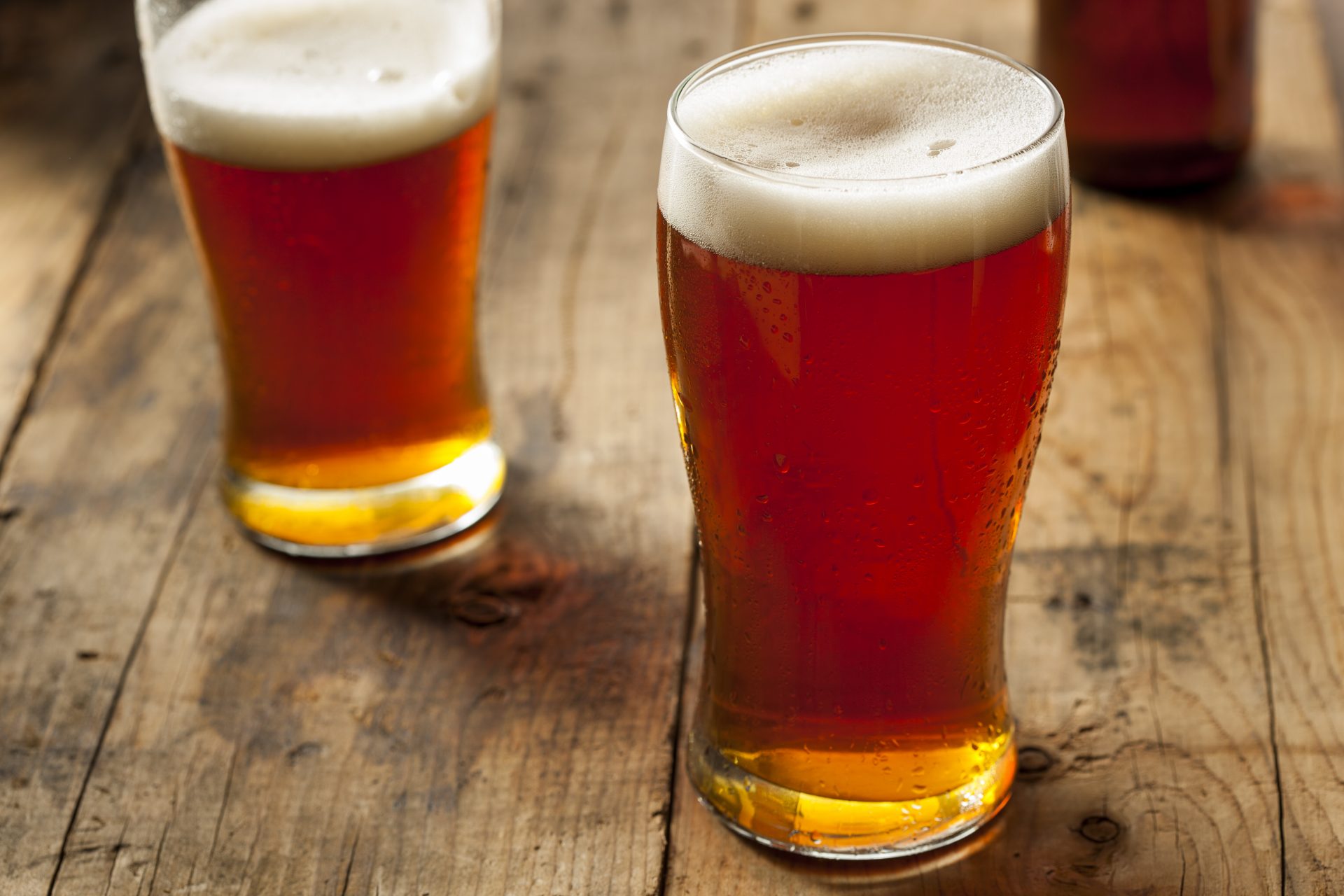Real Food Encyclopedia | Beer
Here’s food for thought: Beer is food. We may think of it as a refreshing accompaniment to a slice of pizza, but beer is an agricultural product, and considerable resources — mostly grains, and lots of water — go into its production, and sustenance, in the form of calories, results from it. Beer has a significant impact on our food system; take hops for example. This key ingredient in beer (especially today’s) is grown predominantly for the production of the beverage.
The craft beer movement in the U.S. has been lauded for helping revive not only heritage styles of beer, but also a sense of pride in locally made products. Begun by a number of small breweries in the 1970s, it has spread throughout the country and stands as a model of the viability of small-scale food and drink production. For instance, craft beer has continued to eat away at the market share of once impenetrable monopolies such as Miller-Coors and Anheiser-Busch. Furthermore, the craft of brewing beer at home has fostered a better understanding of the ingredients and production methods used to make this favorite beverage.
Fun facts about beer:
- The Reinheitsgebot, or purity decree mandating that all beers be produced with only four ingredients (water, barley, hops and yeast) in Germany is the oldest known food regulation in the world. It has been practiced by German brewers since the 15th century.
- It’s widely rumored that the Mayflower landed at Plymouth Rock because it was running low on beer. In fact, it was running low on supplies in general, including beer, which was safer to drink than water.
- The earliest known beers, such as those enjoyed in Ancient Egypt, were likely thick porridges incorporating old bread, and not very intoxicating.
- George Washington was very fond of beer and wrote a homebrew recipe.
- IPA stands for “India Pale Ale,” and the style is heavily hopped because hops helped prevent beer from spoilage over the long trip to British colonies in India.
What to look for when buying beer
Strong, hoppy, crisp, cloudy: there are endless styles and characteristics attributed to beers. But one thing beer generally has in common is its effervescence, produced naturally through the brewing process. (Yet still some beers, particularly those served on cask, are not quite as fizzy.) Depending on the style and process, one can sample beers that have a distinctly sour taste of lactic acid (often marketed as “farmhouse” style ales), or a funky note of brettanomyces (a “wild yeast” that has enjoyed fringe popularity). Some beers are unfiltered, creating a hazy complexion rather than crystal-clear. Others are thick and syrupy thanks to a profusion of brewing grains (think Guinness). Beers may be flavored not only with hops for added bitterness, but spices, fruits and sometimes, chemical flavoring agents, adding to nuances in taste.
Sustainability of beer
Water usage
Beer also requires a lot of clean water to produce. One 12 ounce bottle of beer requires a whopping 28 gallons of water (that’s 37 gallons of water per pint for you draft-only folks, too). According to global estimates today, the water used directly in the brewing process is actually more efficient in mass conglomerate breweries than smaller craft breweries. But no matter who is brewing, it takes a considerable amount of water to produce beer.
Cultivation of beer ingredients
Beer as we know it is made primarily with malted barley grains, hops and water. It can also be made with other grains such as wheat and rye. These grains are harvested in the fall and undergo a malting process by soaking them to germinate the grains, then drying them out. The starches are converted to sugars, which is why malted barley is sweet and used in candies, too. These grains are then often roasted to varying degrees to achieve different flavor profiles.
Hops are the female flowers or cones of the perennial hop plant, a winding, leafy vine. It grows best in temperate regions in the Northern Hemisphere, where it is native, and requires tall stakes or rope structures for climbing to produce sufficient hop flowers for cultivation. It is harvested in the late summer or early fall. Hops used for commercial beer production are processed to remove the husks from the sticky, resinous centers, which are pressed into pellets. These are kept refrigerated in airtight bags to preserve their flavor.
Seasonality
Beer is produced year-round, but is best enjoyed as fresh as possible.
What to look for when buying beer
Storing
The hops and alcohol content of beers today make it a shelf-stable product when properly bottled or canned. Unlike wines, however, it does not generally improve in flavor by aging. For best flavor, many breweries and point-of-sale places such as bars, stores and distribution centers prefer to keep beer refrigerated. (Air and sunlight can also spoil beer, which is why kegs are kept under pressure.)
Brewing your own beer
Homebrew supply stores were once a rare specialty shop, doomed to dwindle much like the number of sewing and craft-supplies shops in any town. But thanks to the Internet, a new generation of homebrewers can order supplies online and become inspired to brew. You can even get homebrew kits to make a certain beer recipe from many suppliers.
Homebrew recipes aren’t as easy to follow from a book if you haven’t worked alongside another brewer, learning its process from observation or practice before. But those looking to get into the craft can find many books and online resources, and clubs to join in their area. A good place to start might be the Homebrew Association of America’s website, which also has a fountain of user-submitted beer recipes.
Nutrition
Beer contains anywhere from less than 3 to 30 percent alcohol by volume (ABV), but most pale lagers have around 4 to 6 percent. As an alcoholic beverage, it’s strongly recommended by doctors to enjoy in moderation. Women who are pregnant are advised against drinking alcohol and increased use can lead to liver damage. It should come as no surprise that increased use is not particularly good for your gastrointestinal system, either, as with any other alcohol, and causes nausea and impaired judgement, sight and speech.
Unfortunately, the number of chemical additives used in some commercial beers is not readily known, as brewers today aren’t legally required to disclose ingredients. There have been reports of chemicals lurking in brewing procedures, and there have been efforts toward transparency on labels. Until more information is known, however, it’s difficult to determine what effects these chemicals might have on the body.
Top photo is by Brent Hofacker/ Adobe Stock.


